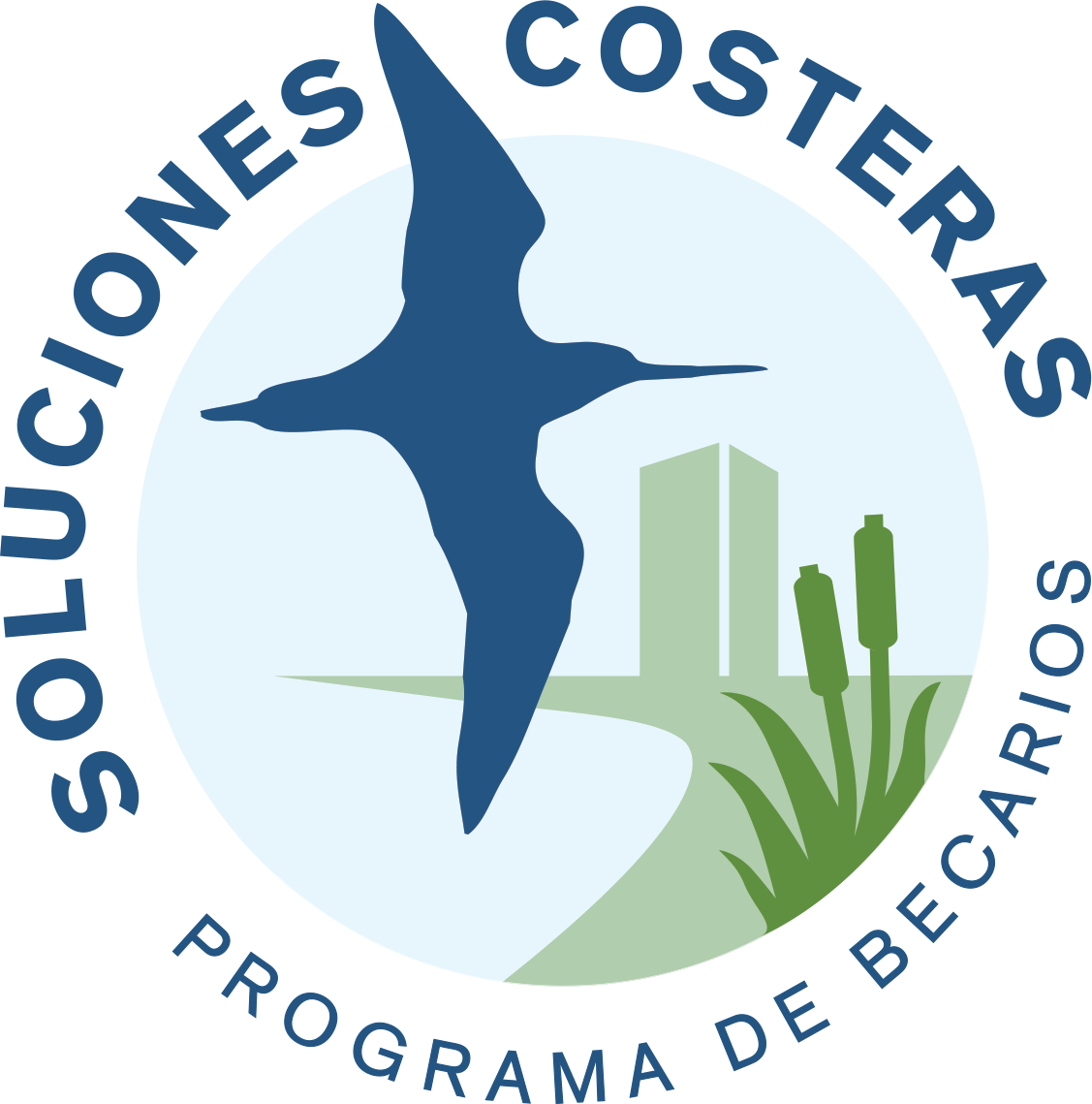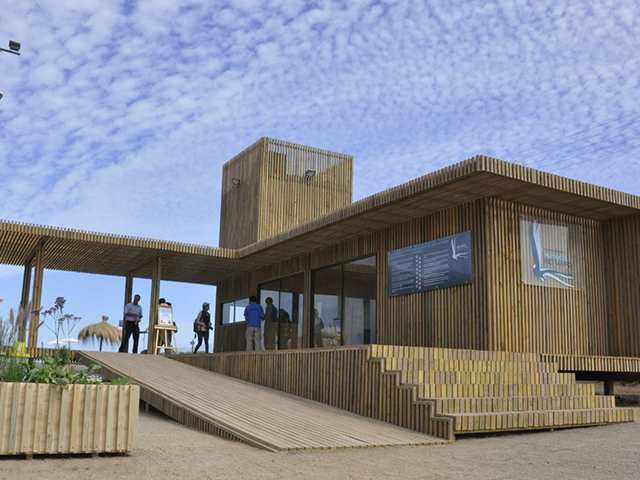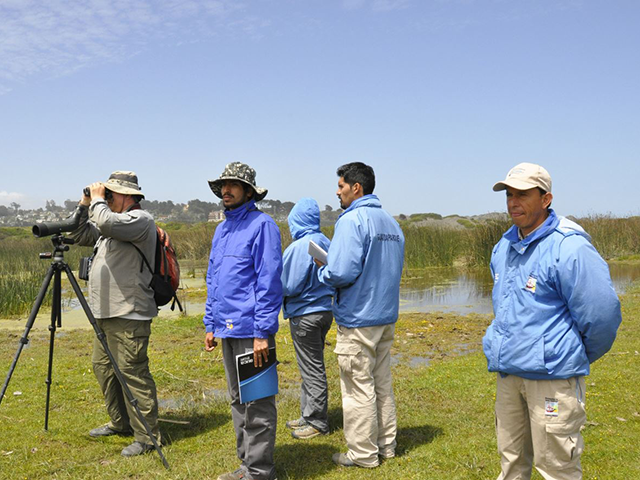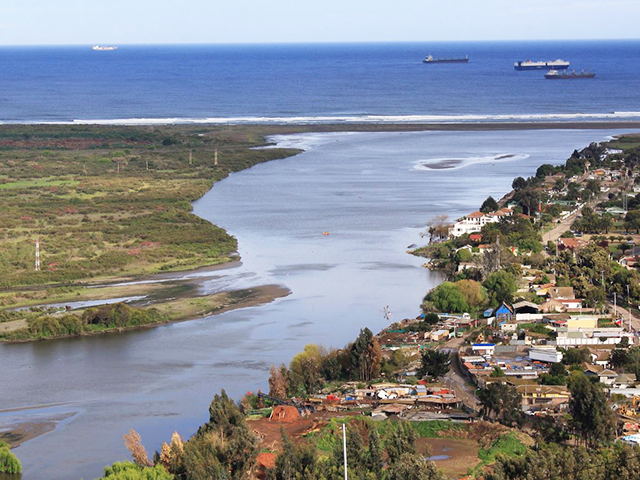The Maipo River Estuary and Wetland
Sectors involved: Government; Architecture; Planning; Academia; Education
Country: Chile
The Maipo River wetland and nature park is an ideal example of how cross-sector collaborative projects can generate positive sustainability outcomes for key coastal sites for migrating shorebirds. The Santo Domingo Municipality started the process through their initiative to protect 40-ha of key wetland and estuary habitat along the Maipo River, Chile. In 2014, Fundación Cosmos and Fundación Mar Adentro worked with the Municipality to implement different projects to promote sustainable tourism, environmental education and scientific research in the wetland areas. Fundación Cosmos prepared a master plan where the conservation, restoration and general areas of use were zoned, and also drafted an action plan that outlined different types of projects to be implemented during the next decade. Among these actions, the project collaborators built a visitor center and related sustainable infrastructure, such as boardwalks and interpretive trails, that allow this ecosystem to receive a certain number of visitors without suffering negative impacts.
At the same time, the Natural History Museum of San Antonio and other partners helped strengthen the governance of the park through the nomination and successful declaration of the estuary as an important WHSRN site. Currently, the wetland has a permanent team of rangers that protect the site and organizes guided environmental education tours through the wetland.
In less than 3 years, these joint efforts were able to address the threats to the wetland habitats, achieving a balance between nature and the sustainable use and development of the Maipo River Estuary and wetlands. These outcomes would not have been possible the collaboration and knowledge of all these different sectors.

El Programa de Becarios para Soluciones Costeras construye y apoya a una comunidad internacional para diseñar e implementan soluciones que abordan los desafíos costeros a lo largo de la Ruta Migratoria del Pacífico. Nuestra meta principal es conservar los hábitats costeros y las poblaciones de aves playeras mediante el desarrollo del conocimiento, los recursos y las habilidades de profesionales latinoamericanos, y el fomento de colaboraciones entre diversas disciplinas y sectores.



